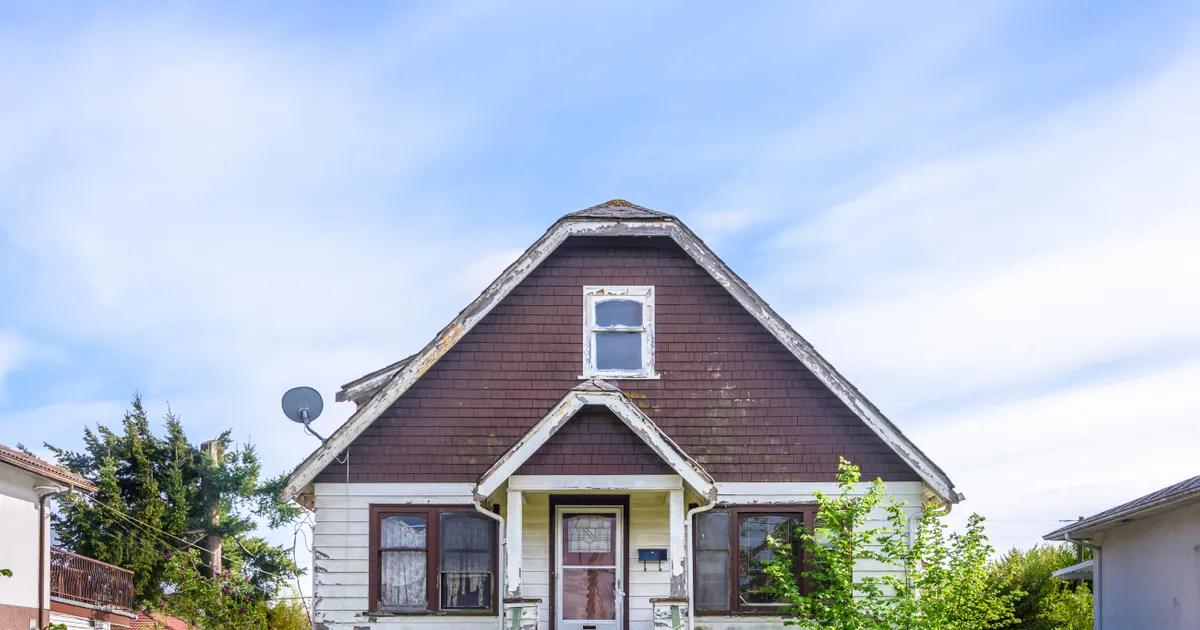Abandoned homes, often seen as symbols of urban decay, present a unique set of challenges and opportunities for real estate developers. These properties, which can range from historical buildings to modern but neglected structures, offer a canvas for transformation and revitalization.
This article explores the complexities of investing in abandoned homes, including the risks, potential rewards, and the impact on communities. As we delve into this intriguing aspect of real estate development, keep in mind that this field is continuously evolving, and further online research is essential for anyone considering such an investment.
 Shutterstock: karamysh
Shutterstock: karamyshUnderstanding the Appeal of Abandoned Homes
The allure of abandoned homes for developers lies in several factors. Firstly, these properties are often available at below-market prices, making them attractive investment opportunities.1
Secondly, they present a chance to preserve a piece of history, especially if the property is of historical significance. Moreover, redeveloping such properties can have a positive social impact by revitalizing neighborhoods and reducing urban blight.
Assessing the Challenges
Investing in abandoned homes is not without its challenges. One of the primary concerns is the condition of the property. These homes may require extensive renovations to make them livable or compliant with current building codes.
Developers must also navigate legal and bureaucratic hurdles, which can include unclear property titles, zoning issues, and compliance with local historic preservation laws. Additionally, these projects often require a significant upfront investment, and the return on investment can be uncertain.
Identifying the Opportunities
Despite the challenges, investing in abandoned homes can be highly rewarding. Developers have the opportunity to create unique, desirable properties that stand out in the real estate market.2
There’s also the potential for significant financial returns, especially if the property is in a location primed for growth or gentrification. Furthermore, these projects can earn goodwill and positive publicity by contributing to community revitalization and historical preservation.
Navigating Legal and Regulatory Frameworks
A crucial aspect of investing in abandoned homes is understanding the legal and regulatory environment. This includes researching property ownership, obtaining the necessary permits, and ensuring compliance with local regulations, including those related to historical preservation.
Developers should also be aware of any government incentives or programs available for rehabilitating abandoned properties, which can provide financial assistance or tax benefits.
The Importance of Community Engagement
Successful redevelopment of abandoned homes often requires community support. Engaging with local residents, community groups, and government officials can provide valuable insights into the neighborhood’s needs and preferences.
It also helps in building a positive relationship with the community, which can be beneficial for the project’s success. Involving the community in the planning process can ensure that the redevelopment aligns with local interests and contributes positively to the area.
Financial Considerations and Funding Options
The financial aspect of redeveloping abandoned homes is a critical factor. Developers need to have a clear understanding of the costs involved, including purchase price, renovation expenses, and any unforeseen costs.
It’s important to conduct a thorough financial analysis to assess the viability of the project. Additionally, exploring various funding options, such as loans, grants, or partnerships, can provide the necessary capital for the project.
Strategic Planning and Market Research
Before diving into a project, it’s essential for developers to engage in thorough strategic planning and market research. Understanding the local real estate market, including demand for housing, rental rates, and the preferences of potential buyers or tenants, is crucial.3
This research should also encompass the history of the property and the neighborhood, as this can impact both the redevelopment process and marketing strategies. Identifying the target market early on helps in tailoring the redevelopment to meet specific needs and preferences, increasing the likelihood of a successful investment.
The Role of Technology in Redevelopment
Technology plays a significant role in the redevelopment of abandoned homes. Modern tools like 3D modeling and virtual reality can aid in visualizing the potential of a property before physical work begins.
These technologies not only help in planning renovations but also in marketing properties to potential buyers or investors. Additionally, incorporating smart home technology into the redevelopment can increase the property’s value and appeal.
Balancing Historical Preservation with Modern Needs
When dealing with abandoned homes, especially those with historical value, it’s important to balance preservation with modernization. This involves restoring original features of the property while updating it to meet current living standards and building codes.
Collaborating with preservation experts and local historical societies can provide insights into maintaining the integrity of the property’s historical aspects while making necessary upgrades.
Risk Management and Contingency Planning
Investing in abandoned homes carries inherent risks, including unforeseen structural problems, delays in obtaining permits, or changes in market conditions.
Effective risk management and having a robust contingency plan are essential. This includes setting aside a contingency budget, having flexible timelines, and being prepared to adapt to changing circumstances during the project.
Marketing and Selling Redeveloped Properties
Once the redevelopment is complete, effective marketing and selling strategies are crucial. This includes showcasing the unique aspects of the property, such as its history, sustainable features, or innovative design elements.
Utilizing various marketing channels, including digital platforms, real estate agents, and open houses, can attract a wider audience of potential buyers or tenants.
Learn More Today
Investing in abandoned homes offers a unique blend of challenges and opportunities for real estate developers. While these projects require a significant amount of research, planning, and capital, they can yield substantial rewards in terms of financial returns, community impact, and preservation of history.
As the real estate market continues to evolve, so do the prospects for abandoned homes. Whether you are a seasoned developer or a newcomer to the field, continuous learning and staying informed about the latest trends and regulations in property redevelopment is crucial.